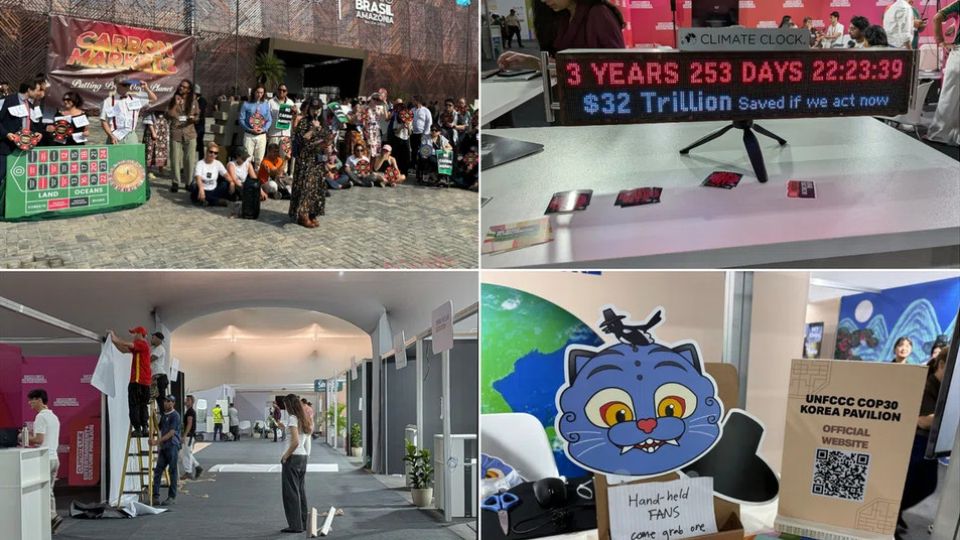November 14, 2025
BELEM, BRAZIL – After a busy opening day at the UN climate talks, the second day of COP30 on Nov 11 was replete with rivalry, revelry and rebellion.
Outside official negotiations, countries, companies, academics and other non-state actors also take part in the annual conference, which is being held in Belem, located at the north-eastern edge of the Amazon rainforest.
Pavilions, a mainstay of the climate conference, give countries and interest groups the chance to showcase their climate change solutions, and promote their cultures.
Organisers sometimes offer freebies, food and cultural performances to draw crowds to the events and panel discussions at these pavilions.
From South Korea’s popular fan that rides on the high of the film KPop Demon Hunters to competitions over coffee and art, The Straits Times recaps memorable moments from the conference so far.
1. Sweltering heat, torrential downpours
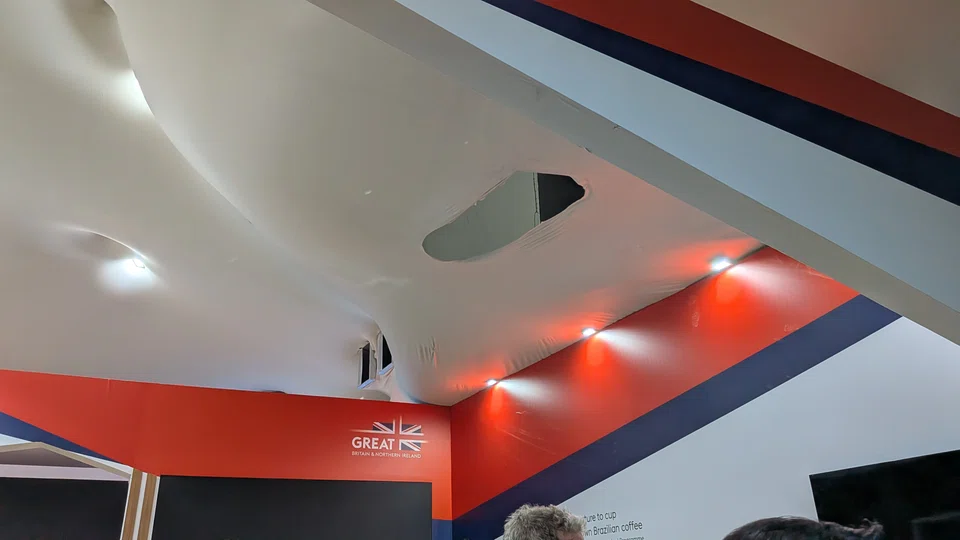
Torrential rain tore a hole in the ceiling of the United Kingdom’s pavilion. PHOTO: THE STRAITS TIMES
Participants felt the erratic nature of the Amazonian city’s tropical climate, as sweltering heat occasionally gave way to torrential rain, which then flooded parts of the COP30 venue.
A downpour on the first day also tore a hole through the ceiling of the United Kingdom pavilion.
Within the compound’s temporary structures, which were set up on an urban park developed by the city for COP30, jacket-clad participants were seen fanning themselves, even though the Brazilian presidency had relaxed the conference’s dress code, anticipating the sweltering temperatures.
The organisers worked quickly to respond to the weather woes. By the time attendees returned to the venue on day two of the conference, the hole at the UK pavilion was patched up, and electric fans were set up near several pavilions.
But even these measures and the air-conditioning failed to stave off hot and sticky conditions in areas farther away from the plenary and press rooms.
2. The KPop Demon Hunters fan that won fans
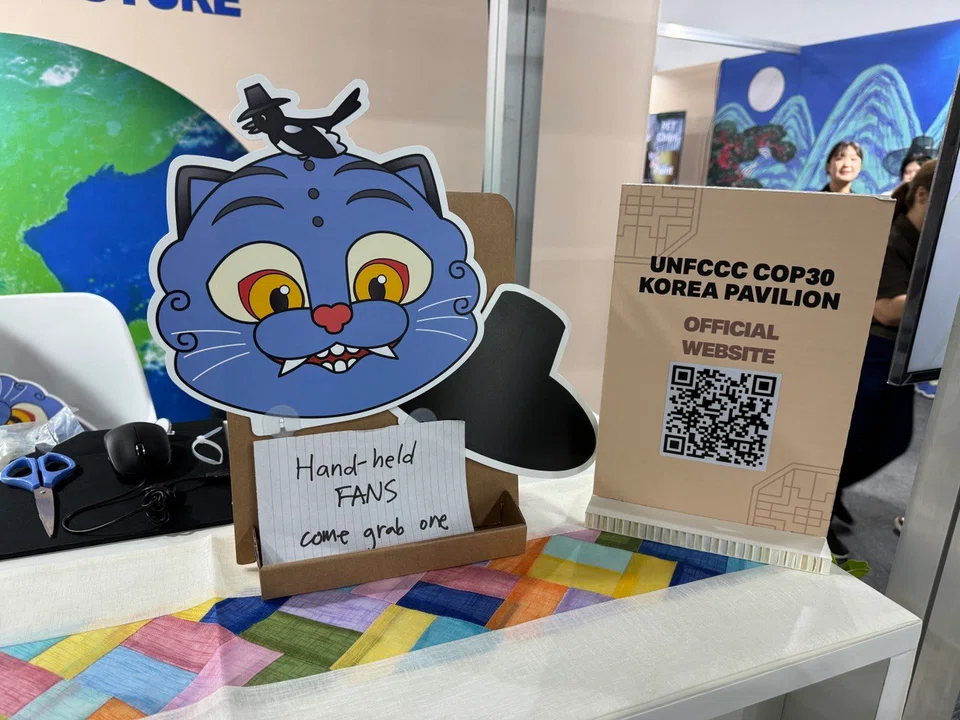
The fan, which depicts a tiger and a magpie, was a nod to a folk art painting and the popular series K-pop Demon Hunters. PHOTO: THE STRAITS TIMES
The weather-induced discomfort meant that fans distributed by the South Koreans at their pavilion near the entrance of the venue became a hit among participants, who were spotted fanning themselves in nearly every other pavilion.
The fan, which depicts a tiger and a magpie, was a nod to a folk art painting and the popular series KPop Demon Hunters.
Rationing was soon implemented. Four hours after the venue opened, a handwritten note inviting people to take the fans was removed.
A staff member manning the station told The Straits Times that fans were being rationed due to limited supply. By the end of the day, the team had wiped out one of their eight boxes.
3. Traditional art showcases
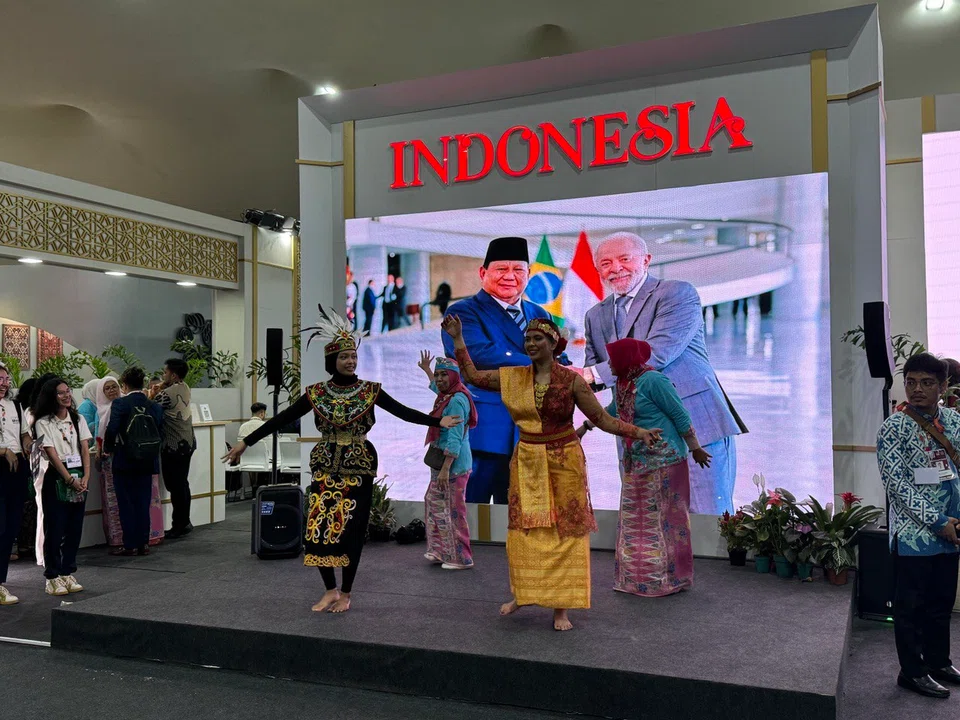
Dancers performing at the Indonesia pavilion. PHOTO: THE STRAITS TIMES
Malaysia and Indonesia, which had pavilions next to each other, showcased their traditional dancing chops to captivate crowds.

A dancer performing a style from Sarawak on Nov 10, the first day of COP30. PHOTO: THE STRAITS TIMES
At the Malaysia pavilion, visitors were also taught by award-winning batik craftsman Amir Harith Mat Kashim, professionally known as Bujin, to apply the dyeing technique.
Meanwhile, Indonesia opted to engage the passers-by by inviting them to join in their upbeat dance routines.
4. COP31 competitors

The pavilions for rivals for COP31 Australia and Turkey were placed side by side. PHOTO: THE STRAITS TIMES
Both Australia and Turkey have indicated their interest to host the next UN climate conference, COP31. Since 2022, both nations have been in a stand-off over which one will host the next COP.
If the deadlock remains unresolved, the conference will head to the German city of Bonn, where the headquarters of the UN Framework Convention on Climate Change is located.
The land Down Under had said it is moving to host the conference in solidarity with its Pacific island neighbours, which are on the front lines of rising sea levels brought about by climate change.
Meanwhile, Turkey has argued that its geographic location would entail lower planet-warming emissions arising from flights bringing delegates to the conference, and highlighted that its oil and gas industry is smaller than Australia’s.
At COP30, competition between the two went up a notch, with both countries having pavilions located side by side.
Over the first two days of the summit, both pavilions lured delegates, with Turkey laying out tote bags and tea, and Australia offering its renowned coffee. Lines comprising over a dozen people were seen at both pavilions.
5. Campaigns and protests

A protest against carbon markets outside the COP30 venue. PHOTO: THE STRAITS TIMES
The iconic entrance to the section of the conference venue that hosts the formal negotiations, known as the blue zone, is a hot spot for protests.
Even before the summit officially opened, ST saw a group of banner-toting women cheerily calling for attendees to go vegan.
On the second day of the conference, protestors voiced concerns against carbon markets, saying the world’s governments were gambling away the futures of people and their land.
Dozens of indigenous people and student groups forced their way into the COP30 blue zone, injuring two staff members, and causing minor damage to the venue, with videos showing the doors of the entrance being knocked down.
Several waved flags with slogans calling for land rights to be respected.
The group had branched off from a demonstration, slated to end south of the conference centre, calling for attention to the impacts of climate change on public health and the urgent need for policies that protect both people and the planet.
6. China makes presence felt

Panda-related merchandise given out by the China pavilion. PHOTO: THE STRAITS TIMES
The Asian titan ensured that its presence was both seen and heard.
Chinese-manufactured electric vehicles ferried heads of state and delegates around Belem, grand music played from its pavilion in the main passageway, and panda-themed headbands were given to those who attended the side events at its pavilion.
While Chinese leader Xi Jinping is not expected to show up at COP30, copies of the fifth and latest volume of his speeches and writings were displayed at the pavilion.
7. Incomplete pavilions
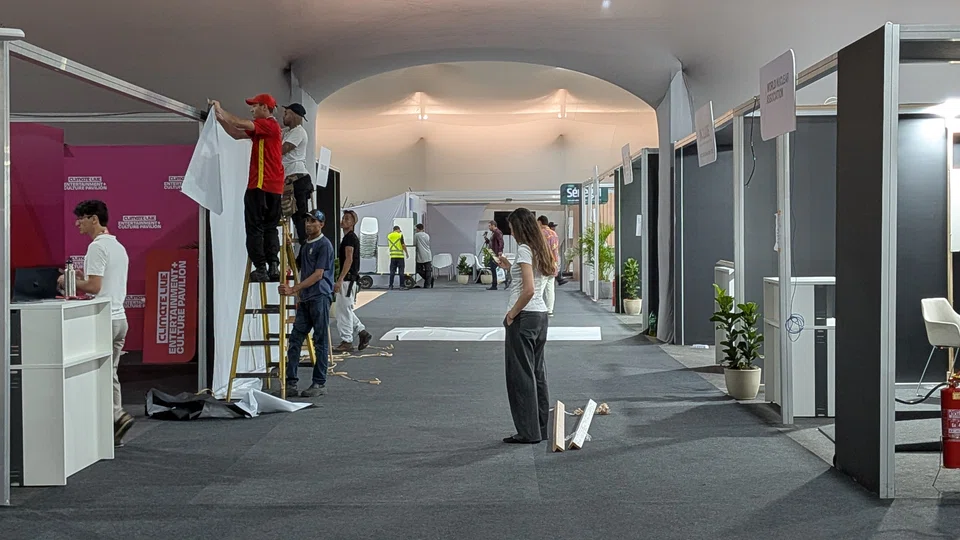
Metres away from the busy plenary rooms of COP30, at least six pavilions were still seen in a bare or unfinished state on the first day of the conference. PHOTO: THE STRAITS TIMES
Metres away from the busy plenary rooms of COP30, at least six pavilions were still seen in a bare or unfinished state on the first day of the conference.
Workers busied themselves on ladders, as cardboard boxes were scattered inside the booths, which tended to be on the outskirts.
The unfinished state of pavilions has been attributed by some to delays, which left countries and companies scrambling to ready their displays in time for the first day.

Indigenous people from the South Pacific at the opening of the Indigenous People’s Pavilion on Nov 10. PHOTO: THE STRAITS TIMES
The Indigenous People’s Pavilion literally lacked power when an electricity outage disrupted their opening.
Undeterred, representatives of the indigenous groups pressed on with song and music, as a crowd clapped and cheered in approval.
On the second day, most pavilions were set up, but a few like those belonging to Mongolia and El Salvador continued to lack decor.
8. Singapore pin interest

One of three pins given out by the COP30 Singapore pavilion. PHOTO: THE STRAITS TIMES
The forest-inspired Singapore pavilion garnered a steady stream of the conference’s merchandise hunters, looking to get a limited-edition pin showcasing a different facet of the city-state.
In total, the pavilion will distribute three designs, including one featuring the Sunda pangolin and oriental pied hornbill as symbols of Singapore’s conservation efforts to protect native wildlife.
9. First Asean pavilion
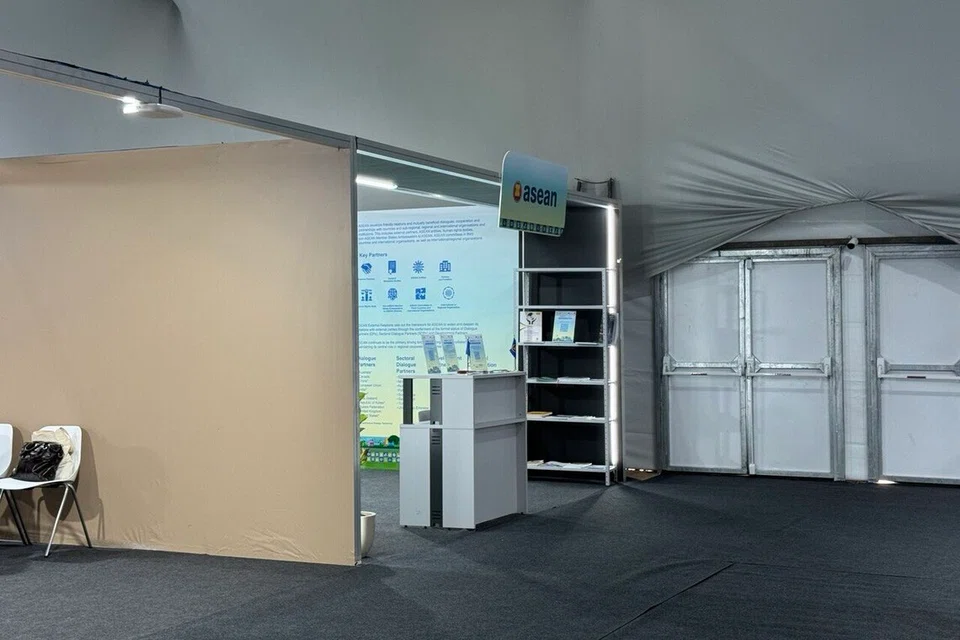
The first ASEAN pavilion was opened on Nov 10. PHOTO: THE STRAITS TIMES
Asean made a modest debut at COP30 with its inaugural pavilion, which showcased its efforts to respond to the challenges of biodiversity and climate change.
The opening day brought together South-east Asian member states, the European Union and other partners, with the association hoping that the booth will spur the success of sharing the region’s climate actions, ambitions and unique challenges.
10. Doomsday clock for the climate

A clock at the Climate Live Entertainment + Culture pavilion that counts down to the time left to limit global warming. PHOTO: THE STRAITS TIMES
As the conference hall emptied on the first day, a clock on the periphery of the conference centre declared there were less than four years left for the world to take steps to tackle the climate crisis.
The contraption tracks the time left to limit global warming to 1.5 deg C, which the parties attending COP30 agreed to do under the Paris Agreement a decade ago.
It is housed by the Climate Live Entertainment + Culture pavilion, a collaboration between climate activists that celebrates culture’s power to drive climate action.


